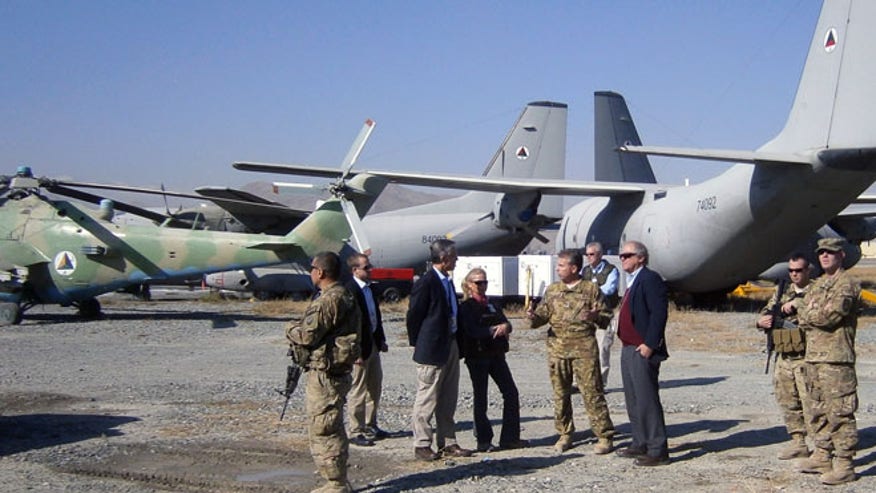M WAQAR..... "A man's ethical behavior should be based effectually on sympathy, education, and social ties; no religious basis is necessary.Man would indeed be in a poor way if he had to be restrained by fear of punishment and hope of reward after death." --Albert Einstein !!! NEWS,ARTICLES,EDITORIALS,MUSIC... Ze chi pe mayeen yum da agha pukhtunistan de.....(Liberal,Progressive,Secular World.)''Secularism is not against religion; it is the message of humanity.'' تل ده وی پثتونستآن
Saturday, December 14, 2013
Probe launched over $500M spent on Afghanistan planes now sitting idle
The U.S. military spent nearly a half-billion dollars on providing refurbished aircraft to the Afghan Air Force, only to abandon the contract and leave the planes collecting dust on airfields in Kabul and Germany.
With the planes potentially heading for the trash heap of the Afghanistan war, the chief military watchdog overseeing Afghanistan spending is launching a review into the terminated program.
"I'm very troubled with the fact we may have wasted a half-billion dollars on planes that don't work, will never be flown and will probably be scrapped," Special Inspector General John F. Sopko told FoxNews.com in a statement. "We intend to get to the bottom of this and hold people accountable."
Sopko wrote to Defense Secretary Chuck Hagel and other military officials on Dec. 5 informing them of his office's review. Sopko said the planes are "currently sitting unused" at the Kabul International Airport and Ramstein Air Base in Germany. He stressed the need to "ensure that the U.S. government does not repeat the mistakes made throughout this nearly half billion dollar program."
Sopko has been on the warpath over military resources wasted in Afghanistan, as the U.S. prepares to withdraw most its troops from the country.
He recently reopened an investigation into a $34 million military facility in southwestern Afghanistan that he's described as entirely unnecessary.
The story of the G222 aircraft program bares similar themes.
According to the inspector general's office, the Defense Department in 2008 launched a program to give 20 G222s (C-27A) -- military transport aircraft built in Italy -- to the Afghans. The department contracted with Alenia Aermacchi North America.
But despite spending at least $486 million on the program, officials determined that those in charge did a poor job getting the spare parts needed to keep the planes working.
Further, a Pentagon watchdog reported that the planes flew only 234 of the 4,500 "required hours" between January and September of last year, and another $200 million potentially would be needed to buy the outstanding spare parts. Some of those parts were described as "unavailable."
In December 2012, the Air Force ended the contract. Several months later, officials ended the program altogether and opted to go with an "alternate aircraft" in the long term.
The IG's latest investigation will examine the decision to provide the aircraft to the Afghans as well as what might happen to the 20 planes idling in airfields, including the possibility of "disposal."
Lt. Gen. Charles Davis, top acquisition official in the U.S. Air Force, recently told Bloomberg that the planes themselves just weren't right for the environment, and probably will be "destroyed and moved out of the country."
Air Force spokesman Ed Gulick, though, said the fate of the planes is contingent on a pending 2014 defense bill which would allow the Pentagon to effectively take over the aircraft from the Afghan security forces.
"With this authority, DoD could undertake final disposition of the equipment, including reuse, sale, transfer, or disposal," he told FoxNews.com in an email.
As for the contract, he said the military did not renew the program because Alenia "struggled to consistently meet contractual obligations."
But the contractor claimed to Bloomberg that the company was "proud of its work."
According to the contractor's website, the aircraft were meant to be the "backbone" of the Afghan Air Force, expanding their ability to provide aid and security. The planes are able to carry up to 10 tons of cargo.
Subscribe to:
Post Comments (Atom)


No comments:
Post a Comment